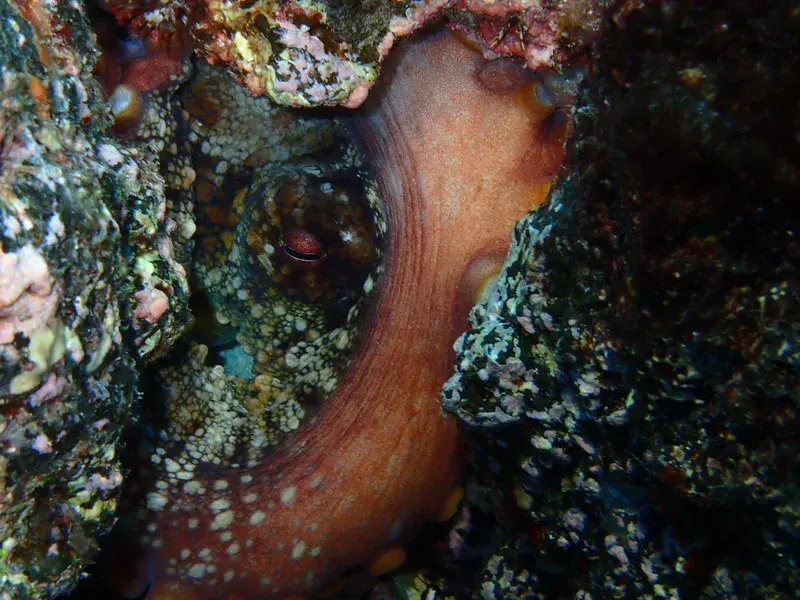
Pyroclastoctopus: a hiding lesson
If it weren't for the reddish tentacle's underside it would have been impossible to make a difference between the "Octopus vulgaris" and his hiding place. The surrounding rock is a pitch black pyroclastic material of basaltic composition with scattered carbonate-covering algae of a thousand colours. The piroclasts deposited in a sub-aereous environment in Lanzarote. Sea level rise, due to volcanic downlift, tectonic tilting, climate change and subaereous erosion are all needed to explain the hiding place of such a beautiful animal in a perfect and outstanding costume. Don't forget the octopus' crab-tapa, can't you see it?
Categories
- Biogeosciences (605)
- Climate: Past, Present & Future (742)
- Field (2899)
- Geomorphology (1407)
- Ocean Sciences (338)
Location
- Europe (3893)
- Southern Europe (1691)
- Spain (819)
- Exact location (-13.4644 W, 29.0151 N)
Tags
- basalt (34)
- volcanic landscape (32)
- canary islands (6)
- atlantic ocean (11)
- piroclastic (1)
- ocotpus (1)
Colours
Image properties
4608 × 3456 px;
image/jpeg; 7.4 MB
Camera:
Olympus TG-4
Taken on 28
September
2016
Submitted on 14 February 2018
Licence
Creative Commons Attribution 3.0 Unported (CC BY 3.0)
Credit
Miguel Llorente (distributed via imaggeo.egu.eu)
Share
Appreciate
Report